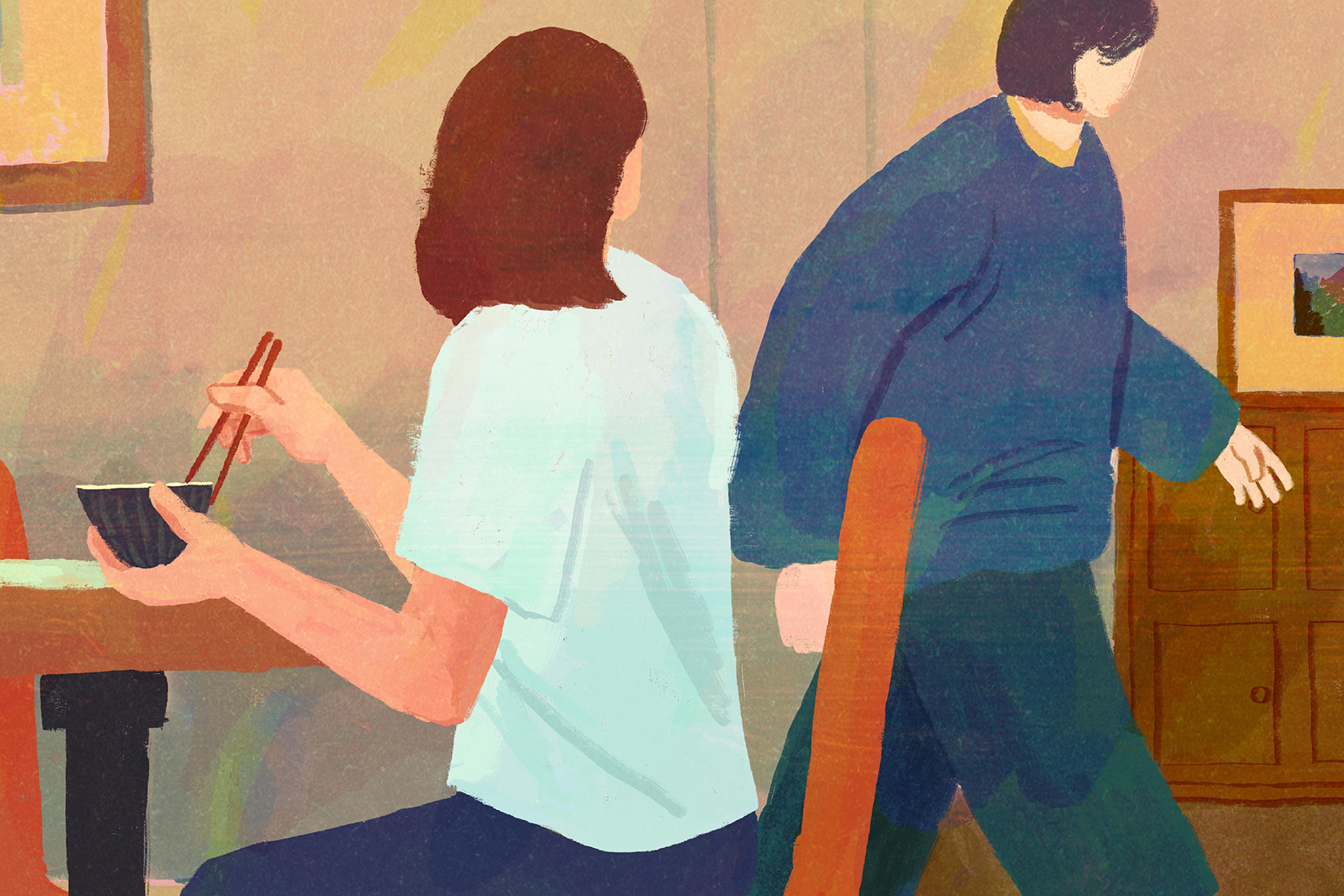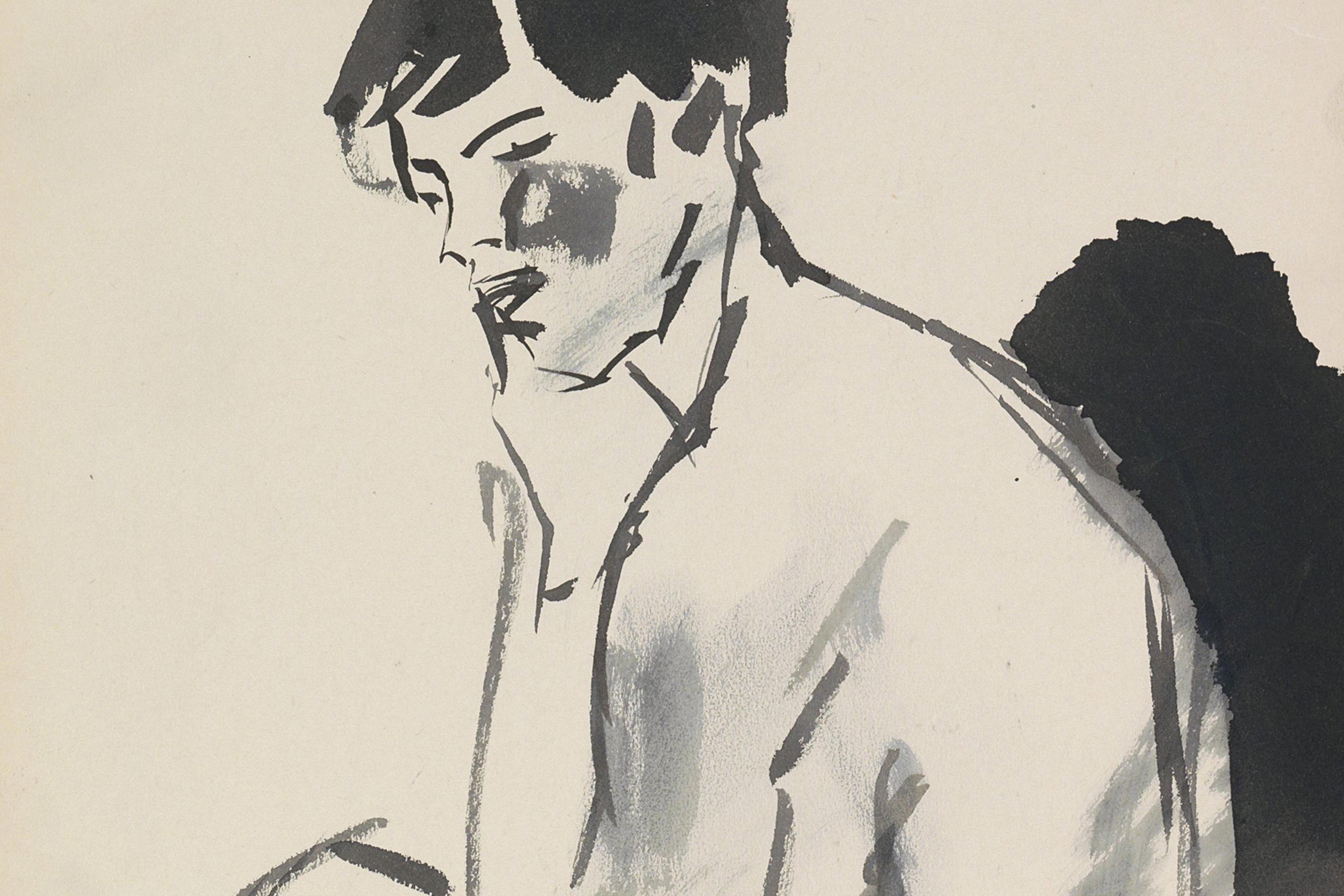People with a diagnosis of anorexia nervosa and bulimia nervosa often say they feel fat. In fact, not only do they say they feel fat, but many also insist that – despite evidence to the contrary – they are fat. Unsurprisingly then, this feeling features in influential theories of eating disorders as well as in the most widely used measures of eating disorder symptoms.
Eating disorder sufferers stand out in terms of how little sympathy they receive. Their friends, family and colleagues will often dismiss their feelings of fatness or, worse yet, label them as fat phobia. As one former neuropsychologist recalls of his first experience with this group: ‘I am now sorry to say, I found them tiresome … here were these (I thought) precious young women just refusing to eat.’ And while there are genuine concerns about using the term ‘fat’ to denote something negative or undesirable, the way in which people with eating disorders feel about their bodies clearly contributes to their immense suffering. Understanding what drives complaints of feeling fat is crucial to alleviating this suffering.
So why do people report feeling fat when reality suggests otherwise? Clinicians and researchers are mostly in agreement on this point. When those with eating disorders report feeling fat, the standard theory claims, they are misidentifying what they feel. What they feel are emotions such as sadness or anxiety, but what they report is feeling fat. So the saying goes ‘fat is not a feeling’. The clinician’s job, then, is to help their clients identify their true feelings.
Interpreting feeling fat as a form of emotion misidentification is widespread. Clinical manuals instruct clinicians to do so, and the motto ‘fat is not a feeling’ has been popularised on social media and online blogs. When Facebook included a chubby-cheeked ‘feeling emoticon’ under the label ‘fat’, there was a swift backlash from online activists, employing the motto to argue their position. It also featured in debates over Taylor Swift’s music video for her track ‘Anti-Hero’ (2022), where the singer was seen stepping on a bathroom scale that read ‘fat’. Swift, who has been open about her past struggles with an eating disorder, was accused of fat phobia, leading to the video being edited.
We believe that, rather than dismissing or denouncing those who report feeling fat, clinicians and others ought to try to understand what they mean. One way to do so is by reading through online spaces where people with eating disorders share their experiences. In such spaces, many express frustration at how their reports of feeling fat are dismissed:
‘Explained it to my therapist that it truly feels like I am swelling and expanding.’
‘I don’t feel fat as in *emotionally* I feel fat *physically*’
‘when i physically feel huge, [I feel fat is] not wrong to say’
These complaints suggest that, at least in some cases, reports of feeling fat are not about emotions such as sadness or anxiety. They are about perceived changes in physical body size. To be clear, these individuals are not in fact physically large. But they do report feeling that way, and this appears to be a genuine feeling and not just the misidentification of an entirely different emotional phenomenon.
We can gain insight into how feeling fat – as a physical sensation – might work by looking at other cases of physical misperception. For example, people who undergo anaesthesia often report an enlarging of the anaesthetised body part. Another relevant phenomenon is the aptly titled Alice in Wonderland syndrome. Here, people who suffer from severe migraines describe sudden changes in the size of their bodies. As one such individual put it:
I have a very peculiar feeling of being very close to the ground as I walk along. It is as though I were short and wide, as the reflection in one of those broadening mirrors one sees in carnivals, etc.
So those with eating disorders aren’t alone in describing changes in their experience of body size. But why take any of these reports seriously? Perhaps those with eating disorders, anaesthesia experiences, and Alice in Wonderland syndrome are equally guilty of misidentifying their true feelings. If the only evidence we have involves self-report, the threat of misidentification looms large. What would help clarify the situation is a different kind of evidence: something that provides independent reason to conclude that these conditions involve physical misperception. Such evidence can be found in the latest research on proprioception.
Close your eyes and focus on your body. Doing so gives you a (rough) sense of your bodily boundaries – the space that you occupy. That is proprioception – the sense dedicated to telling you where your body ends and the outside world begins. To achieve this, the brain consistently combines a medley of signals from receptors throughout the body – in your skin, joints and muscles – providing an experience of our physical boundaries.
Signals from sensory receptors can’t do all the work, as they aren’t designed to tell the brain how big the body is. For that, the brain relies on a stored map. Just like a map of a city stores information about the size of streets and parks, this body map stores information about the size of body parts. If your body map tells the brain that your arms are 6 foot long, then that’s how long you will experience them being.
The body map presents the possibility of finding supporting evidence for the reports of physical changes in body size provided by those with eating disorders. Measuring their body maps can tell us how they experience their body size. If they are represented as larger, then this would be evidence that they experience themselves as larger in a literal sense, not due to a displacement of other emotions.
One way to measure peoples’ body maps is to ask them where the boundaries of their body are, and figure out the map based on this. But this falls victim to the same problem, relying on subjective descriptions. A better way is by testing peoples’ behaviour without relying on their reports. Fortunately, people use the body map automatically to control their movements, so researchers can measure how people move and in turn this can reveal their internal body map.
Patients with eating disorders behaved as you would expect if they experienced their bodies as larger
Consider how effortlessly we humans usually move through the world without colliding into things. This is facilitated by the information in our body maps, which our brains use to ensure that our bodies avoid collisions as we navigate environments, for instance, walking through gaps such as doorways. When gaps are wide enough to accommodate our body width, we can walk straight through them, without turning our shoulders. Among different people, the ratio of shoulder-to-gap width at which they will turn their bodies is roughly consistent – when gaps are narrower than 1.3 times the width of the body. Or, more accurately, when the gap is narrower than the body as represented in the internal body map.
Several recent experiments used this insight to measure the body maps of people with eating disorders. In the first of these studies, the Dutch psychologist Anouk Keizer and her colleagues asked participants to walk through different-sized gaps, and measured the gap-width at which participants started to turn their shoulders. They found that participants with eating disorders turned their shoulders at significantly wider gaps than the usual ratio. These patients moved their bodies as if they were wider, a result that has been replicated by two other research groups.
An important feature of the original study was that the researchers also had participants point out where they felt the boundaries of their bodies to be. They discovered that those with eating disorders were turning at a similar ratio to neurotypical participants, albeit as if their bodies were as wide as they felt them to be – as wide as their body maps represented them.
These experiments don’t rely on self-reports. In fact, for some of them, participants didn’t know what the experiments were testing. Yet those with eating disorders behaved just as you would expect if they experienced their bodies as larger. These findings avoid the problems associated with self-reports (that people could be misidentifying their true feelings) and support the idea that complaints of feeling fat are sometimes references to proprioceptive misperception – sufferers aren’t physically larger, but they experience themselves as if they are.
This research suggests that, when many eating disorder sufferers report feeling fat, they aren’t misidentifying their emotions, but describing their proprioceptive experience. Their body maps represent them as larger, which causes them to physically feel larger, which they report as feeling fat. It is no wonder then that the clinical mantra ‘fat is not a feeling’ sometimes falls on deaf ears.
This line of work also chimes with a related area of investigation concerning the sense of interoception (the inner state of the body) and aberrant feelings of fullness among people with eating disorders. For instance, recent research shows that participants with anorexia nervosa report feeling full with (objectively) less stomach content than neurotypical controls. This suggests that, just as feelings of fatness could be based on a distorted body map, feelings of fullness could be based on internal sensations that have gone awry.
Taken together, these findings have implications for researchers, clinicians and loved ones. For researchers, the body map distortion involved in eating disorders represents an important avenue for exploration. How do these maps become distorted? How can we correct them? These are both important problems to tackle. Given that reports of feeling fat are widespread (beyond eating disorder sufferers) the extent of body map distortion in the neurotypical population should also be explored. This research also points to a potentially important distinction among eating disorder subtypes, between those who misidentify their emotions and those who suffer from proprioceptive (and perhaps interoceptive) misperception.
For clinicians and loved ones who hope to combat the harmful effect that feeling fat has on sufferers of eating disorders, a first step should be taking their complaints seriously. By accepting that, in some cases, feeling fat is a description of physical misperception, we can try to understand the nature and effect of these unsettling bodily experiences, and help sufferers realise them for what they are: deeply misleading. This isn’t to say that every complaint of feeling fat is a reference to misperception. Associating sadness or anxiety with feeling fat does occur, and clinicians have success in guiding clients to identify their true emotions. However, it should be kept as a live possibility that ‘feeling fat’ is sometimes used to describe misleading proprioceptive experiences of body size.
Given that, in some cases, fat is a (physical) feeling, albeit a misleading one, we believe society should change its default response to these complaints, ushering in a new respect and sensitivity towards those who report feeling this way. For those of us with friends or family members who have suffered from or continue to suffer from eating disorders, it is important to be open minded and respectful of their testimony. While the ‘emotional misidentification’ view is well intentioned and often appropriate, immediately labelling complaints as inaccurate can dismiss genuine experiences. The first step to understanding eating disorders and the unusual experiences involved is to take sufferers at their word.








